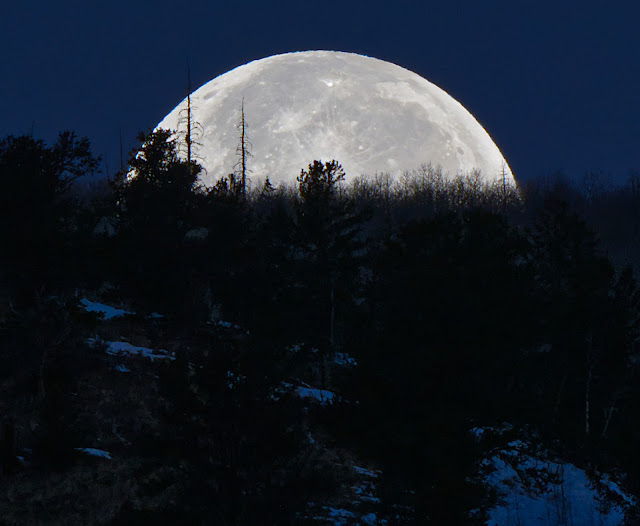The sky over urban Santa Fe is not really dark enough to work well with fast aperture lenses and long exposures. Last night the sky brightness was a typical sqml = 19.68 mpsas in a NE direction. The bulk of the city lies to south. In that direction the brightness increases to about 19.5 mpsas.
I have an old Nikkor (Nikon) 85mm f/2 Ai-S lens that works extremely well for daytime photography with a Sony A7iii camera. A clear moonless Monday night provided an opportunity to see how it performs for astrophotography.
The following image was taken with a Sony A7iii + Nikkor 85mm f/2 + Kase AstroBlast filter, ISO 800, 20 s (on a Vixen Polarie star-tracking mount).
 |
| The Shoulders of Orion. Red supergiant Betelgeuse is left of center. |
An image taken without the diffusion filter reveals some off-axis astigmatism, but it is much less than I expected. The serial number on this lens suggests that it was manufactured around 1990 (I bought it used). The design is typical of that era: 5/5, five elements in five groups, all spherical and no special glass. In contrast, the recent Rokinon AF 85mm f/1.4 FE ii has an 11/8 configuration with four High-Refractive-Index (HR) and one Extra-low Dispersion (ED) elements. This newer and faster lens is also much larger:
The same night I also took an image with the Olympus m.Zuiko 75mm f/1.8 ED lens. This modern lens has a 10/9 configuration with two HR and three ED elements.
 |
Olympus E-M5iii + 75mm f/1.8 + Kase Astroblast filter.
|
Here are two 1:1 crops from the Nikkor and Olympus lenses, matched for scale, without the diffusion filter (the Olympus image had a cross-star filter in place).
 |
Nikkor 85mm (left), Olympus 75mm (right)
|















_Irene-apPC212721.jpg)
_Frigga-apPC212721.jpg)
































